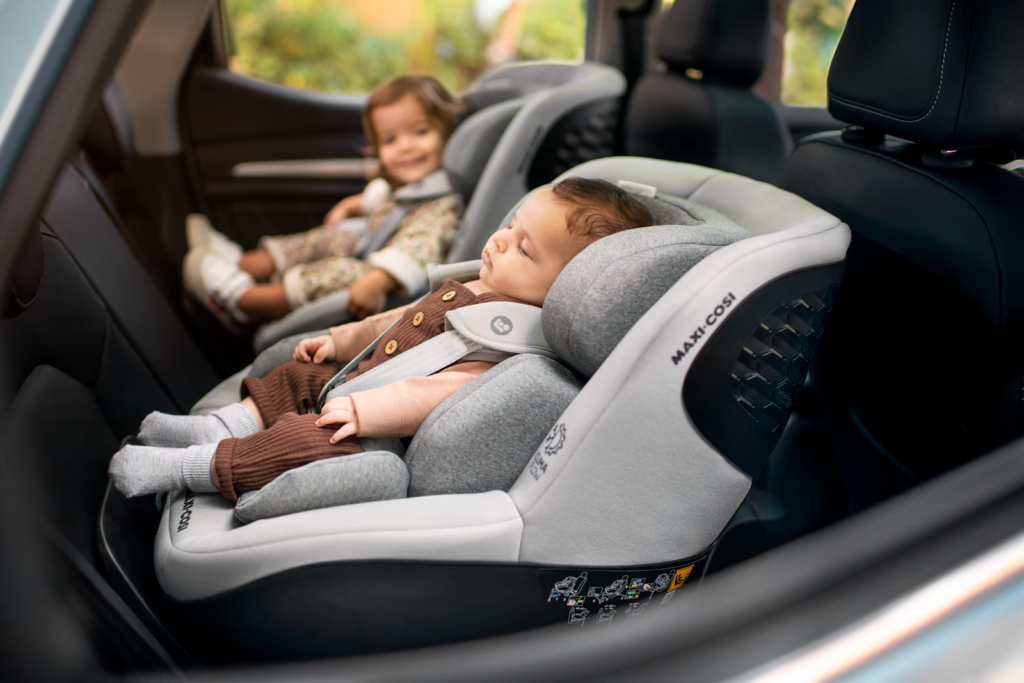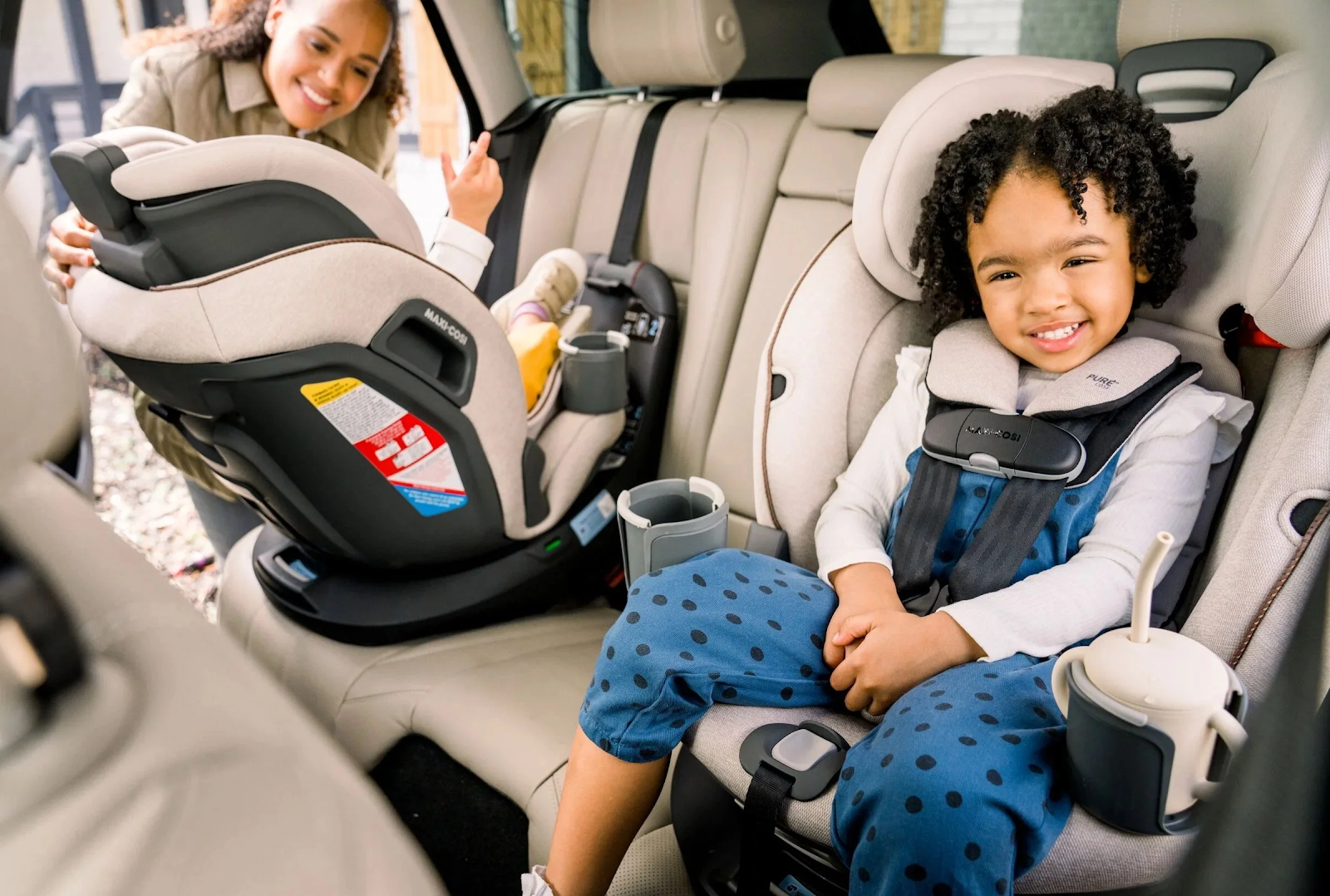Parenting on the go comes with a myriad of challenges, and one of the most common frustrations arises every time you buckle your child into the car. The Rotating Car Seat revolutionizes how parents transport their children by allowing the seat to pivot toward the car door, significantly reducing the awkward twisting and straining of the back. This innovative design not only enhances the overall user experience but also ensures a more secure latch, thanks to improved visibility and access. For families juggling multiple responsibilities and eager to streamline daily routines, the introduction of this seat marks a game-changing development. No longer will caregivers struggle with one hand on the steering wheel and the other trying to wrestle a squirming toddler into position. Instead, the process becomes smooth, intuitive, and remarkably fast, granting both peace of mind and precious extra moments in the morning rush. With safety standards at the forefront of its design, the rotating mechanism locks firmly in place, delivering stability and reliability on every journey.
Beyond convenience, many manufacturers have integrated ergonomic padding, adjustable headrests, and customizable recline positions, making the seating experience more comfortable and supportive for growing spines. Some models even include advanced side-impact protection panels and built‑in temperature regulation features to adapt to various climates and seasons. As more caregivers discover the advantages of this approach, the rotating car seat has quickly become a must-have for modern families seeking a blend of functionality and safety. Whether running errands across town or embarking on a weekend road trip, the confidence that comes from knowing your child is both secure and comfortable cannot be overstated.
Why Choose a Rotating Car Seat?

A Rotating Car Seat offers convenience that standard fixed seats simply cannot match. By rotating toward the door at a simple push or pull, caregivers can avoid the contortionist act often associated with placing a child in their seat. This streamlined motion not only saves time but also promotes better posture for adults, reducing the risk of back and shoulder pain. Moreover, many rotating designs support multiple installation methods, such as ISOFIX, LATCH, and seatbelt anchoring, ensuring compatibility with a wide range of vehicle models. Parents can rest easy knowing that a single product can adapt to both current and future cars in their fleet. The flexibility of the rotation mechanism also facilitates the transition between rear‑facing and forward‑facing positions, allowing families to adhere to recommended safety guidelines without the need for additional tools. Ultimately, the ease of use, coupled with robust safety certifications, makes this seat a top contender for anyone prioritizing both practicality and protection.
Key Features of a Rotating Car Seat
Many models of the Rotating Car Seat feature 360‑degree rotation, which allows caregivers to swivel the seat to any position—rear‑facing, forward‑facing, or even sideways for quick access. This all‑around mobility is complemented by multi‑stage reclining options that cater to different age groups, ensuring that infants and toddlers alike remain comfortable during every trip. Additional features often include one‑hand harness adjustment, removable machine‑washable covers, and integrated sun shades to shield sensitive skin from UV rays. Some premium versions come equipped with energy‑absorbing foam and reinforced steel frames to meet the most stringent safety standards. For those who travel frequently, detachable bases with quick‑release buttons make installation and removal a breeze, enabling seamless transfers between vehicles. By combining these elements, the rotating design elevates the traditional car seat concept, blending innovation with essential protective measures that families have come to expect.
Installation Guide for Your Rotating Car Seat
Installing a Rotating Car Seat properly ensures safety and ease of use from day one. Begin by placing the base on the vehicle seat and locking it in place using your car’s ISOFIX anchors or the LATCH system, depending on your model. Once the base is secure, attach the seat and rotate it toward the door until it clicks firmly. Always verify the rotation lock mechanism by gently attempting to swivel the seat back; a secure lock will resist movement. Next, thread the vehicle seatbelt or tether strap through the designated path, following the manufacturer’s color‑coded guides. Tighten all straps until the seat moves less than an inch side‑to‑side at the belt path. Finally, adjust the harness height so that the shoulder straps sit at or just below your child’s shoulders when rear‑facing, and at or above the shoulders when forward‑facing. With these steps, you can be confident that your child is protected and that the rotating function will operate smoothly every time.
Safety Benefits of the Rotating Car Seat
The Rotating Car Seat reduces strain on the caregiver’s back when securing the child, a benefit that should not be underestimated over hundreds of car rides. Beyond ergonomic advantages, the pivoting action allows for a more precise installation, reducing the margin for human error that can occur when reaching awkwardly around fixed seats. This improved access also makes it easier to ensure the harness is snug against the child’s torso, a critical factor in crash protection. Furthermore, many rotating designs include advanced side‑impact protection features that absorb and distribute collision forces, safeguarding the head and neck. In emergency scenarios, caregivers can quickly swivel the seat outward to remove the child, saving precious seconds. When combined with rigid installation systems and clear indicator windows, these safety enhancements make the rotating option a standout choice for parents who refuse to compromise on security.
Maintenance Tips for a Rotating Car Seat

To keep your Rotating Car Seat in top condition, regularly inspect the rotating mechanism for debris or wear, and clean moving parts with a damp cloth and mild soap. Avoid harsh chemicals that could degrade plastic components or compromise the locking mechanism. Periodically remove the seat cover and machine wash according to the care instructions, ensuring that it remains free of crumbs, spills, and dust that might impede rotation. Check the base’s anchoring system and tether straps for signs of fraying, and replace any worn parts immediately. Lubricate metal hinges with a silicone‑based spray to maintain smooth operation, but be cautious to protect fabric and foam elements from overspray. Store the seat in a dry, climate‑controlled environment when not in use, especially during seasonal vehicle changes. By following these simple guidelines, you’ll extend the lifespan of your investment and preserve the safety features that make this seat so valuable.
Conclusion: Embracing the Rotating Car Seat Advantage
In today’s fast‑paced world, every minute counts, and innovations that streamline everyday tasks can make a significant difference in family life. The rotating design offers a perfect blend of convenience, comfort, and safety, addressing common pain points that have long frustrated caregivers. From effortless entry and exit to enhanced installation accuracy and emergency accessibility, the benefits are clear. While the initial investment may be higher than standard car seats, the long‑term value—measured in reduced strain, increased confidence, and improved safety—justifies the cost. As more manufacturers refine their rotating mechanisms and introduce new features, the market continues to evolve, offering options for every budget and lifestyle. By choosing a model that meets rigorous safety standards and aligns with your family’s needs, you can ensure that every journey begins and ends with peace of mind.

